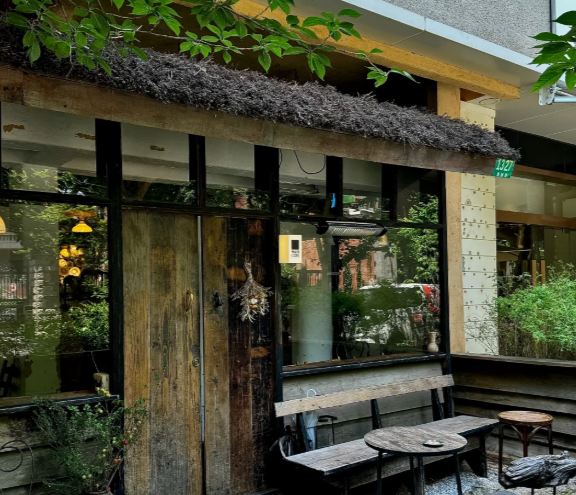2025 Shanghai Coffee Culture Guide: Essential Travel Tips
1.Coffee and Shanghai: A Century of Evolution
In the 1920s international quarter, European residents sipped espresso beneath plane trees—a ritual woven into the city’s urban tapestry. By 2023, Shanghai hosted 8,530 cafés, with the Huangpu District setting a global record at 25 cafés per square kilometer (one every 150 meters). This transcends caffeine; it embodies a cross-generational cultural dialogue. At Donghai Coffee (est. 1934), vintage German roasters operate alongside modern creations like O.P.S.’s nitrogen-infused osmanthus brews, merging heritage with innovation. The journey began in 1853 when British pharmacist J. Lewellyn sold coffee as "cough syrup" in a Nanjing Road pharmacy—a bitter introduction that evolved into a citywide obsession.
2.Neighborhood Coffee Journeys
a.Historic Quarter: Courtyard Cafés
Yongkang Road’s hidden cafés epitomize Shanghai’s bohemian spirit. Baristas sculpt latte art mirroring the Jinmao Tower’s silhouette, while weekday mornings reveal tranquil lanes ideal for photography. This area, once a hub for early 20th-century literary salons, now blends art deco architecture with contemporary coffee culture.
b.Jing’an: Craft Coffee Hub
Home to O.P.S., celebrated for seasonal menus featuring Yunnan honey-processed beans, this district anchors Shanghai’s specialty coffee scene. Reservations via the "OpsCoffee" WeChat mini-program open seven days in advance—a testament to its cult following28. Nearby, % Arabica’s Yuanming Mansion location frames the Bund through floor-to-ceiling windows, merging panoramic views with precision brews.
c.Suzhou Creek: Industrial Brews
Near M50’s avant-garde galleries, SCHAWLOW (1003 Wuding Road) repurposes a factory space into a concrete sanctuary for cold brew drinkers. Steel beams and minimalist aesthetics reflect Shanghai’s adaptive reuse of industrial heritage.

3.China’s Coffee Pioneers
a.Luckin Coffee: Digital Innovator
With 10,000+ app-only stores, Luckin dominates through viral hits like coconut lattes (¥19.9 / $2.7). Its tech-driven model allows foreigners to register via passport numbers, bypassing local SIM requirements.
b.Manner Coffee: Homegrown Star
Born in a 2-square-meter Shanghai alley, Manner’s ¥15 ($2) flat white rivals premium imports. Its North Bund flagship overlooks the Huangpu River, symbolizing local brands’ ascent from grassroots to global contenders.
c.Seesaw Coffee: Yunnan Advocate
As the first major chain to source beans from China’s coffee heartland, Seesaw’s Simao AA pour-over (¥35-50 / $5-7) exudes lychee and black tea notes—showcasing terroir-driven craftsmanship.

4.Practical Guide for Travelers
a.Payments
-
Use Alipay Tour Pass for digital payments (foreign cards accepted).
-
WeChat mini-programs also work with foreign passports for payments and bookings.
b.Bike Access Without Local SIM
-
Hotel Concierge Services: Rent bikes under the hotel’s account (¥20 / $3 daily deposit)—the most reliable option for foreigners.
c.Ordering Essentials
-
“Shǒu chōng” (手冲): Single-origin pour-over.
-
“Guì xiá” (瑰夏): Geisha beans (premium: ¥80-120 / $11-16).
-
Compliment aromas with “Hěn xiāng!” (很香)—locals’ nod to quality.
5.Morning Coffee Walk: Jing’an to the Bund
-
9:00 AM: O.P.S.’s autumn persimmon espresso tonic—a seasonal highlight8.
-
10:30 AM: Stroll plane-tree tunnels on Julu Road, passing art deco façades along Yu Yuan Road.
-
11:30 AM: % Arabica at Yuanming Mansion, where glass walls dissolve into Bund vistas. Transport: Metro Line 2 to Nanjing West Station + rented bike (15 mins).
6.China’s Coffee Beyond Shanghai
-
Yunnan Highlands: Elephant Manor (Pu’er) hosts coffee-picking tours (November–March), featuring Geisha and Catimor varieties.
-
Beijing Hutongs: Barista Specialty (47 Wudaoying Hutong) near the Forbidden City crafts layered "dirty coffee" in courtyard settings.
-
Reference Guide: The Coffee Atlas of China (2024) documents regional profiles from Yunnan to Hainan.
7.Resources & Cultural Impact
-
Navigation: Baidu Maps English edition pinpoints specialty shops via "Specialty Coffee Shanghai" searches.
-
Events: Shanghai Coffee Guild (WeChat ID: SH_Coffee) updates festivals like Lujiazui Coffee Week, attracting 200+ global brands.
Shanghai’s coffee culture thrives on symbiotic innovation: Italian brand Lavazza chose the city for its first flagship outside Italy, while homegrown chains like Nowwa expand globally. Initiatives like "Bear Paw Coffee"—staffed by deaf baristers—embed social inclusion into the caffeine experience, proving that every cup here carries not just flavor, but a narrative of resilience and reinvention. From colonial-era curiosity to a global brew capital, Shanghai’s coffee scene remains a living chronicle of cultural fusion—one sip at a time.

